
Le Rocher des Aigles Ecoparc, Rocamadour
Nestled in the heart of the Quercy region at the very top of the town of Rocamadour this park allows you the chance to meet some wonderful birds.

© Relais Saint Jacques de Compostelle Hotel, Collonges-la-Rouge
Authenticity in the very centre of town
A warm welcome is assured upon arrival at this cosy and pleasingly authentic hotel. With rich red bricks, hanging baskets and unique style, it stands as the ideal base from which you can explore. It is also the only hotel in the centre of town and can only be accessed by foot for the majority of the day.
There are 10 fuss free, comfortable rooms from which to choose from. Each is equipped with free wifi, TV and a number of them have stunning panoramic views of the surrounding town and countryside.
As well as breakfast, you can also choose to go half-board and make the most of the fantastic on site restaurant. Alternatively, you can still enjoy a drink from the bar out on the terrace and make the most of your surroundings.
The large restaurant can seat up to 85 people and meals can be enjoyed in front of the large open fire in the cooler months or out on the terrace in the summer.
Local seasonal fare is the food of choice and the chef certainly makes the most of what is on offer, with a number of delicious offerings typical of the region. It is unsurprisingly very popular, so be sure to make a reservation.

Nestled in the heart of the Quercy region at the very top of the town of Rocamadour this park allows you the chance to meet some wonderful birds.

A living museum that offers much more than your ordinary museum or theme park. A great day out that will take you and your family back in time to an era long ago.

This area provides water-sports for all ages. Renowned for its architectural heritage and sites of natural beauty, you will find that paddling is a great way to relax and have fun whilst enjoying the scenery.
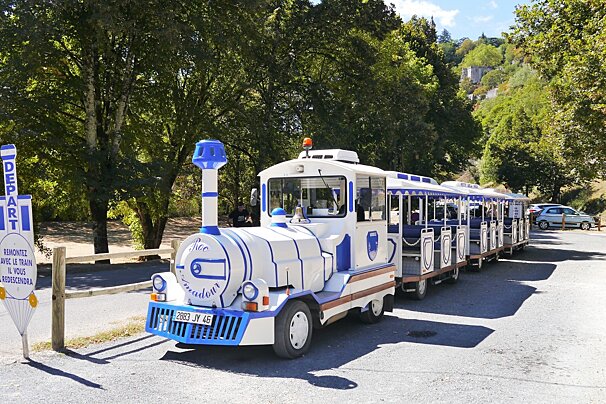
In true French style Le Petit Train will take you on your short journey from the bottom of Rocamadour to the town centre above you.

From tree climbing to paintballing and even via ferrata, the Foret des Ecureuils Adventure Park has plenty of offer all ages.

A full day tour for those interested in wine, the terroir, the makers and other local products of the Dordogne region.
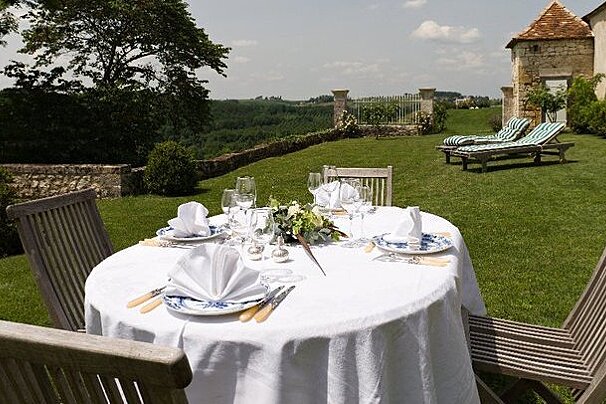
The dining rooms allow for views of the surrounding vineyards and rolling hills. Drinks can also be enjoyed in the small library or among the chestnut trees.

This elegant and sophisticated two Michelin star restaurant offers creative dishes designed by chef Cédric Béchade, who plays with colours and textures in his cuisine.

Founded in 1848, this restaurant is one of the oldest in the town of Saint-Émilion, a UNESCO World Heritage site. French creative cuisine is served in its terrace and three dining rooms, accompanied by wines from the region.
In the charming little village of Saint Andre de Najac, this charming hotel-restaurant offers fine dining, relaxation and nature.
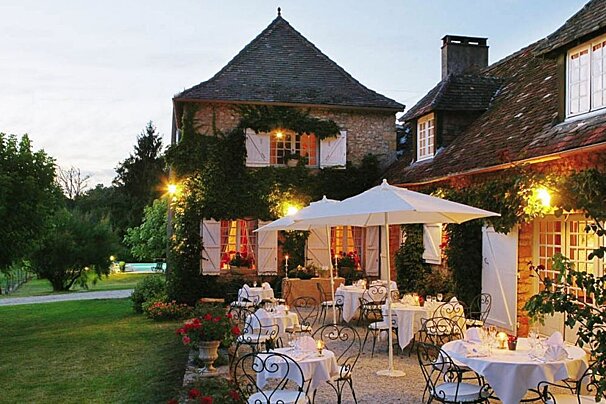
Set in the hotel's 19th Century building, the dining room has wonderful stone walls and comforting, traditional table settings. Weather permitting, you may be able to relish your meal outside on the flowery terrace overlooking the lush garden or even down by the pool.

At the top of the hills of Monbazillac, surrounded by vineyards, the shady terraces and dining rooms of this restaurant offer an unforgettable panoramic view. The chef, Marie Rougier, produces a fine dining menu from seasonal products.
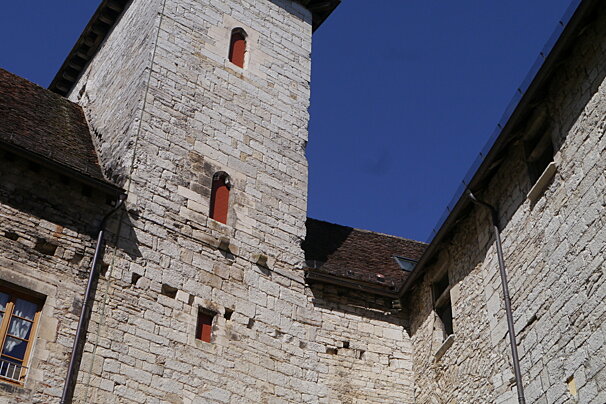
The Palais de la Raymondie stands next to the market hall in the heart of the medieval town of Martel. This museum contains objects dating from paleolothic, neolithic and Gallo-Roman occupations.
Housed in the Hôtel de Labenche, a Renaissance building from the 16th century, this museum traces the archaeological history of the city from prehistoric to the middle ages. It has a large collection of finds and includes the oldest preserved Eucharistic dove in Europe which dates to the 11th century. Coming to more recent history, it has collections representing the cultural development of the city and a collection of English Mortlake tapestries from the 17th century.
This museum in the centre of Brive covers the Second World War and the Resistance. It is housed in the former home of Edmond Michelet, a key resistor who was arrested by the Germans in 1943 and sent to the concentration camp at Dachau. He survived and returned to France in 1945 and went on to become Minister for the Armed Forces under the de Gaulle government. His studies on the Resistance won him literary prizes and his home has become a study centre as well as a museum. Many of the museum's collections were gifts from former resistance fighters and it houses an exceptional collection of over 400 propaganda posters.
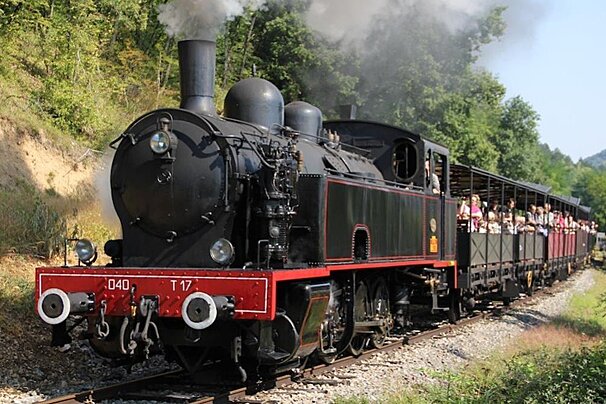
Also known as the Truffle train, it will take you on a journey of 8 miles (13 Km) round trip, more than 80 meters (260 feet) high cliff, giving a wonderful panorama of the Dordogne Valley.
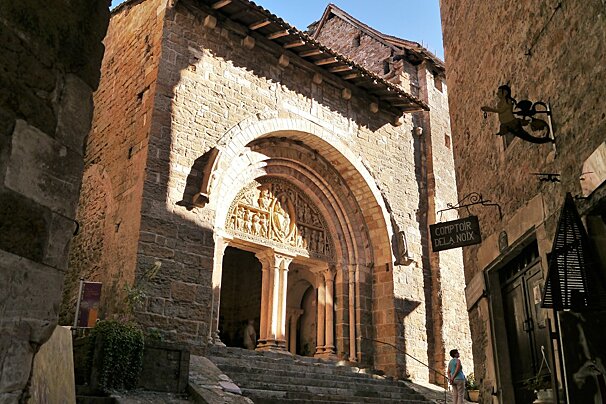
The village of Carennac grew up around a clunian priory founded in the middle of the 11th-century. This beautiful church and cloister are at the centre of the village.

This well-preserved chateau is now home to the Heritage Centre for Art and History of the Dordogne region, with a permanent exhibition that explains the wealth, heritage, art and architecture of this region.
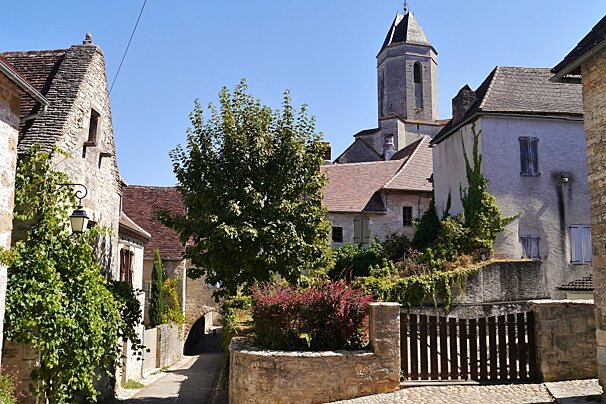
The town of Martel is not, in fact, famous for the brandy (that's Martell with two ll's) but is well known as the capital of truffles and a great producer of walnuts, two of the region's specialities.

Carennac has been previously voted 'One of the 'Most Beautiful Villages in France' and it's easy to see why. The blonde stone and red-brown roofs of its buildings have tall chimneys and are adorned with creepers that turn red in the autumn.

This medieval town on a bend in the Dordogne grew around its 9th century Benedictine abbey of Saint-Pierre.

A base for exploring the region, Souillac has a medieval past and is filled with Romanesque-style sculptures.

Picturesque village typical of Quercy. The traditional houses have corbelled fronts, brown-tiled roofs and pigeon lofts built into their walls.

The riverside town of Saint-Céré is a lovely place to base yourself for excursions in the region. The La Bave river winds its way through the centre of the town and its old buildings have been carefully restored, retaining their timber vaulting or Renaissance stonework.